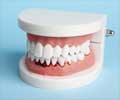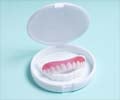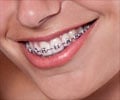- Tooth Discoloration - (https://my.clevelandclinic.org/health/diseases/10958-tooth-discoloration)
- What causes discolored teeth and is there any way to cure or prevent staining? - (https://now.tufts.edu/2016/03/18/what-causes-discolored-teeth-and-there-any-way-cure-or-prevent-staining)
- Dental discoloration: an overview - (https://pubmed.ncbi.nlm.nih.gov/10825865/)
- Tooth discoloration - (https://en.wikipedia.org/wiki/Tooth_discoloration)
- Clinical management of discolored teeth - (https://pubmed.ncbi.nlm.nih.gov/19288841/)
- How to Whiten Your Teeth: 4 Home Remedies - (https://health.clevelandclinic.org/how-to-whiten-teeth/)
General Info about Tooth Discoloration
Poetry compares teeth to pearls.
But unlike pearls, teeth are exposed to a variety of elements in day-to-day life. All these exposures are bound to affect the color of teeth.This change of color is known as tooth discoloration. They might appear slightly yellow or less bright, or they may even develop white or dark flecks(1✔ ✔Trusted Source
Tooth Discoloration
Go to source).
What are the Causes for Tooth Discoloration?
Tooth discoloration can either be on the tooth surface (extrinsic) or on the inner layers of the tooth (intrinsic).
1. Intrinsic Causes
In a tooth with an intact blood and nerve supply, the causes are:
- Hereditary disorders.
- Tetracycline medication.
- Excessive fluoride intake in drinking water.
- High fevers associated with early childhood disease.
- The loss of blood supply and nerve supply can by itself cause discoloration of the tooth.
2. Extrinsic Causes
- Stains from tobacco smoking. Bacteria produce colored pigments.
- A salivary protein layer covering the tooth surface.
- The tinted remnants of a certain membrane seen on the teethsurface as the teeth, initially erupt out into the mouth.
- Tooth decay or a broken down filling(2✔ ✔Trusted Source
What causes discolored teeth and is there any way to cure or prevent staining?
Go to source).
What are the Symptoms of Tooth Discoloration?
Intrinsic Stains
Intrinsic causes are often evident at the time of tooth eruption.
- In hereditary conditions like erythroblastosis fetalis and porphyria the teeth are colored in a brownish blue and a brownish red respectively.
- Tetracycline administration during pregnancy can lead to discoloration of teeth.Depending on the severity, discoloration can range from yellow-orange in mild cases and bluish gray in the most severe cases.
- Fluorosis is a condition seen in places with increased fluoride content in the drinking water. Beyond a certain level, fluoride can cause yellow staining of teeth.
- High fever due to childhood infections can lead to areas of poor calcification within the teeth resulting in the appearance of prominent white spots(3✔ ✔Trusted Source
Dental discoloration: an overview
Go to source). - Occasionally, a tooth may darken either during or after a root canal procedure.
Extrinsic Stains
- Brown stains: It is caused by a thin translucent, bacteria free layer covering the teeth. It is seen in individuals who do not brush their teeth adequately, or in those who use toothpaste with inadequate action.
- Tobacco stains: Dark brown or black surface accompanied by brown discoloration of the tooth substance is seen. These stains results from coal tar combustion present in the tobacco and also due to the diffusion of tobacco juices into the substance of the teeth.
- Green stains: Green to greenish yellow stains, sometimes of considerable thickness, is seen in children. It is usually seen in upper anterior teeth and has been attributed to fluorescent bacteria and fungi.
- Orange stains: Occurs in front teeth, and is caused by color producing bacteria.
- Metallic stains: Caused by metals and metallic salts, which may be introduced into the oral cavity by metal-containing dust inhaled by industrial workers(3✔ ✔Trusted Source
Dental discoloration: an overview
Go to source).
How can we Diagnose Tooth Discoloration?
Diagnosis is made based on the basis of the color of the stain. A careful history taking can be useful in differentiating between an internal stain and an external stain(4✔ ✔Trusted Source
Tooth discoloration
Go to source).
If the stain still remains after meticulous cleaning of the teeth by the dentist, it is understood that the stain is present within the substance of the tooth.
How can Tooth Discoloration be Treated?
Here are three methods to eliminate tooth discoloration:
1. Maintaining Good Oral Health
To reduce tooth stains, it's crucial to maintain proper oral hygiene. Effective practices for removing stains include:
- Daily Teeth Cleaning: Brush and floss your teeth twice daily, making sure to do so 30 minutes after consuming dark, acidic, or sugary foods or drinks to prevent enamel damage.
- Regular Dental Checkups: Dentists recommend professional dental cleanings every six months.
- Mouthwash Usage: Opt for a mouthwash with antibacterial and antiplaque properties.
- Balanced Diet: Incorporate fibrous, crunchy fruits and vegetables into your diet to help remove plaque, reduce discoloration, and prevent erosion.
- Whitening Products: Consider using whitening products containing hydrogen peroxide or baking soda, as they can eliminate bacteria and whiten teeth.
- Discolored Root Canal Treated Tooth: Despite the fact that root canals are not externally visible due to the treatment being conducted internally within the tooth, you might still have teeth with discoloration that may necessitate cosmetic correction, such as the placement of a crown.
Sometimes, bacteria, blood, or saliva can persist within the tooth following a root canal procedure. As these substances break down, discoloration can occur. When this happens, the sole recourse is internal bleaching. Essentially, internal bleaching is a treatment that addresses discoloration from the interior of the tooth outward.
2. LED Teeth Whitening Kits for Home Use
LED teeth whitening employs a blue LED light and hydrogen peroxide to bleach teeth, creating a chemical reaction that efficiently whitens them. At-home LED whitening kits due to their effectiveness, user-friendliness, and minimal side effects. It's important to follow the manufacturer's instructions carefully. After whitening at home, avoid beverages that cause stains, such as red wine, tea, and dark sodas.
3. Professional Teeth Whitening Treatment
Licensed dentists can perform professional teeth whitening procedures in their offices. This method involves a hydrogen peroxide solution and the application of heat or light to expedite the whitening process. Although it can be expensive, with an average cost of $650, professional teeth whitening is the most effective option for intrinsic staining and severely discolored teeth(5✔ ✔Trusted Source
Clinical management of discolored teeth
Go to source).
Preventing Tooth Stains
The most effective way to prevent extrinsic tooth stains includes:
- Daily brushing and regular flossing.
- Abstaining from smoking or tobacco use.
- Limiting the consumption of staining substances like coffee, tea, red wine, dark berries, and curry powder.
- Reducing or avoiding sugary foods and drinks.
- Scheduling professional dental cleanings every six months.
- Using over-the-counter whitening products a few times per week.
- Incorporating coarse and leafy vegetables into your diet to help remove surface stains.
Many people have definite aesthetic problems from internal or external stains, whereas others worry needlessly about the overall color of their teeth. In the latter instance the dentist must decide if the color of the teeth can be improved enough to justify treatment even though the patient insists on having something done.
For e.g. a person with light complexion may believe that their teeth are too dark when actually they are normal in color. A Sun tan, darker makeup or a darker lipstick will usually make teeth appear much whiter by increasing the contrast between the teeth and the surrounding facial features.

Most external stains can be removed by thorough cleaning of teeth, with an instrument called "ultrasonic scaler". This instrument removes most of the stains caused by tobacco, food debris or bacteria. If a broken down filling or a cavity is the cause, filling the defect will improve the discoloration.
Discoloration resistant to cleaning can be corrected or greatly improved through conservative procedures such as Bleaching, Micro abrasion or Veneering.
Stains caused by tetracycline medications are usually much more difficult to treat, and might require a radical approach(6✔ ✔Trusted Source
How to Whiten Your Teeth: 4 Home Remedies
Go to source).
Bleaching of Teeth
The lightening of the color of the tooth through application of a chemical agent, which tends to decolorize the pigmentation present on the tooth, is referred to as bleaching.
Bleaching techniques may be classified as to whether they involve a living tooth or a tooth with no blood and nerve supply. The procedure can be carried out within the dental clinic or by the patient at his residence.
Most bleaching techniques are some form of derivative of hydrogen peroxide in different concentrations and are applied by different application techniques.
Bleaching generally has an approximate life span of 1 - 3 years, although this change may be permanent in some situations.
Tooth discoloration can result from various factors, including foods and drinks like coffee, tea, red wine, and acidic substances. While maintaining good oral health through regular brushing and flossing is essential, it's also crucial to be mindful of what you consume to prevent dental plaque buildup and tooth decay.
From baby teeth to wisdom teeth and beyond, protecting the surface of your teeth with fluoride treatments and timely dental care can help prevent issues such as gum disease, tooth loss, and the need for root canals.
Remember, starting oral care habits early in young children can pave the way for a lifetime of healthy adult teeth, ensuring a bright and confident smile.
















